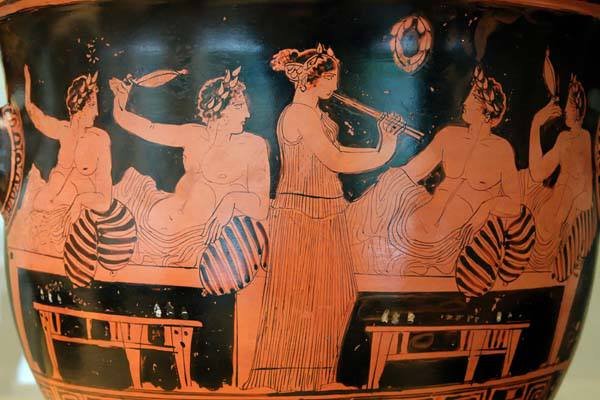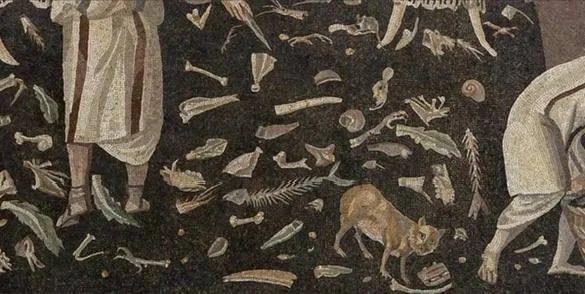The Uncleaned Floor
In antiquity there was a popular mosaic genre that imitates a dirty floor. These mosaics usually decorated banquet halls.
In the leftover scraps you can easily make out fruit, olives, assorted pits, chicken drumsticks, shells, claws, and fish tails and heads. On this mosaic there is even a mouse that has hurried over for a walnut.
What is striking is that the objects are modeled in volume and cast shadows. That tells us these mosaics spread in a period when artists had already mastered light-and-shade modeling, roughly the fourth to third centuries BCE.
As a rule, the “uncleaned floor” ran as a border or outer band of a larger composition and complemented the main scene. This particular example (the first three images) is from a Roman villa, second century BCE, and is signed “Heraclitus” at the bottom near the theatrical masks.
There is also a playful theory that such mosaics were invented as a nod to a popular Greek custom often shown on vases (see the fourth image): the game of kottabos—called catapulta in Latin—where you try to flick wine dregs into a target cup. By the end of a symposium everything would be splattered, which may have inspired these mosaics.






